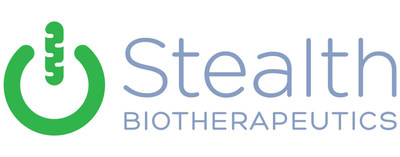Stealth BioTherapeutics Showcases Data for Elamipretide in Dry Age-Related Macular Degeneration at the 2021 ARVO Annual Meeting
Stealth BioTherapeutics Corp (Nasdaq: MITO) has presented new data from the Phase 1 ReCLAIM study at the 2021 ARVO Annual Meeting, focusing on elamipretide for patients with geographic atrophy (GA) related to dry age-related macular degeneration (AMD). The study revealed significant correlations between improvements in low-light visual acuity (LLVA) and mitochondrial health assessments. CEO Reenie McCarthy expressed optimism about potential clinical trial enrichment strategies based on these findings. Elamipretide has Fast Track designation from the FDA for the treatment of dry AMD with GA.
- Improvements in low-light visual acuity (LLVA) significantly correlated with measures of mitochondrial health in patients treated with elamipretide.
- Potential for trial enrichment strategies based on imaging biomarkers to identify patients likely to benefit from elamipretide.
- CEO's confidence in the ReCLAIM-2 trial design and its focus on treating earlier stages of GA.
- None.
Insights
Analyzing...
BOSTON, May 5, 2021 /PRNewswire/ -- Stealth BioTherapeutics Corp (Nasdaq: MITO), a clinical-stage biotechnology company focused on the discovery, development, and commercialization of novel therapies for diseases involving mitochondrial dysfunction, today announced the presentation of new data from a post hoc analysis of the Phase 1 ReCLAIM study evaluating elamipretide in patients with non-central geographic atrophy (GA) and high risk drusen associated with dry age-related macular degeneration (AMD). The data, presented at the 2021 Association for Research in Vision and Ophthalmology (ARVO) Virtual Annual Meeting, showed that for patients with GA treated with elamipretide for 24-weeks, improvements from baseline in low light visual acuity (LLVA), which is the primary efficacy endpoint in Stealth's fully enrolled Phase 2 ReCLAIM-2 trial, were significantly correlated to baseline assessments of mitochondrial health in the ellipsoid zone (EZ). The EZ is a mitochondria-rich area of the retina which supports photoreceptor function and is attenuated in dry AMD. EZ imaging assessments were conducted using optical coherence tomography (OCT) and included pan-macular EZ-retinal pigment endothelium cell (RPE) volume and macular percentage of EZ-RPE attenuation. Improvements in LLVA were significantly correlated to both baseline EZ-RPE volume and EZ-RPE attenuation, with eyes gaining two or more lines showing significantly less EZ-RPE attenuation and percentage area of macular GA at baseline.
"Based on the data presented showing an association between outer retinal features and treatment response to elamipretide, this approach to imaging biomarker interrogation may provide a unique opportunity for clinical trial enrichment and identification of eyes that are more likely to benefit from treatment," noted Dr. Justis Ehlers, the Norman C. and Donna L. Harbert Endowed Chair of Ophthalmic Research at Cole Eye Institute at Cleveland Clinic. "These findings may suggest that there may be a 'retinal reserve' that is required and potentially measurable that provides a greater chance at treatment response."
"It is exciting to confirm the relationship between elamipretide-mediated improvements in visual function and mitochondrial health in patients suffering from progressive vision loss due to GA," said Chief Executive Officer Reenie McCarthy. "These data support our confidence in our ReCLAIM-2 trial design, which focuses on the earlier stages of GA before irreversible mitochondrial and RPE damage is thought to have occurred. We are encouraged to learn that intervening at this stage of the disease may not only slow disease progression, but also restore visual function and visual quality of life to patients suffering from this life-limiting disease. These learnings may also offer potential enrichment strategies to inform Phase 3 trial design following read-out of our ReCLAIM-2 data early next year."
In November 2018, the U.S. Food and Drug Administration granted Fast Track designation for elamipretide for patients with dry AMD with GA.
For additional information on ReCLAIM, ReCLAIM-2 or elamipretide, please refer to Stealth's website and ClinicalTrials.gov.
About ReCLAIM and ReCLAIM-2
ReCLAIM-2 is a phase 2 randomized, double-masked, placebo-controlled study to evaluate the efficacy and pharmacokinetics of elamipretide in patients with dry age-related macular degeneration (AMD) with geographic atrophy (GA). The ReCLAIM-2 study completed enrollment with 176 patients. The primary endpoint of the 48-week study will measure the low-luminance best-corrected visual acuity (LLVA), which assesses visual function under low light conditions meant to represent dusk or indoor (artificial) lighting. Secondary functional endpoints are change in low-luminance reading acuity and best-corrected visual acuity (BCVA). Secondary imaging endpoints assessing the rate of progression of the disease include GA area as measured by fundus autofluorescence and optical coherence tomography (OCT).
ReCLAIM was a Phase 1 clinical trial which enrolled 40 patients with dry AMD with either GA or high-risk drusen to receive elamipretide therapy for 24 weeks. The data showed improvements from baseline in LLVA and BCVA for patients with GA and drusen who completed the trial. Visual quality of life improvement under both low light and ordinary light conditions were also reported.
About Age-Related Macular Degeneration
AMD, a progressive eye condition that is the leading cause of blindness in adults, is estimated to affect approximately 10 million people in the U.S. AMD affects the center portion of the retina, called the macula, which is responsible for central vision and color perception. Although there are FDA-approved treatments for wet AMD, which affects approximately 10 percent of those suffering from the disease, there are no approved therapies for dry AMD. Dry AMD with GA, an advanced form of dry AMD, is characterized by central blind spots leading to permanent loss of vision. The disease is a major contributor to loss of independence and diminished quality of life in older persons.
About Stealth
We are a clinical-stage biotechnology company focused on the discovery, development, and commercialization of novel therapies for diseases involving mitochondrial dysfunction. Mitochondria, found in nearly every cell in the body, are the body's main source of energy production and are critical for normal organ function. Dysfunctional mitochondria characterize a number of rare genetic diseases and are involved in many common age-related diseases, typically involving organ systems with high energy demands such as the heart, the eye, and the brain. We believe our lead product candidate, elamipretide, has the potential to treat both rare metabolic cardiomyopathies, such as Barth, Duchenne muscular dystrophy and Friedreich's ataxia, rare mitochondrial diseases entailing nuclear DNA mutations, as well as ophthalmic diseases entailing mitochondrial dysfunction, such as dry age-related macular degeneration and Leber's hereditary optic neuropathy. We are evaluating our second-generation clinical-stage candidate, SBT-272, and our new series of small molecules, SBT-550, for rare neurological disease indications following promising preclinical data. We have optimized our discovery platform to identify novel mitochondria-targeted compounds which may be nominated as therapeutic product candidates or utilized as mitochondria-targeted vectors to deliver other compounds to mitochondria.
Forward-looking Statements
This press release contains forward-looking statements within the meaning of The Private Securities Litigation Reform Act of 1995. Such forward-looking statements include, but are not limited to, statements relating to preliminary clinical data. Statements that are not historical facts, including statements about Stealth BioTherapeutics' beliefs, plans and expectations, are forward-looking statements. The words "anticipate," "expect," "hope," "plan," "potential," "possible," "will," "believe," "estimate," "intend," "may," "predict," "project," "would" and similar expressions are intended to identify forward-looking statements, although not all forward-looking statements contain these identifying words. Stealth BioTherapeutics may not actually achieve the plans, intentions or expectations disclosed in these forward-looking statements, and you should not place undue reliance on these forward-looking statements. Actual results or events could differ materially from the plans, intentions and expectations disclosed in the forward-looking statements as a result of known and unknown risks, uncertainties and other important factors, including: those regarding Stealth BioTherapeutics' plans, strategies and expectations for its preclinical and clinical advancement of its drug development programs, including its ongoing clinical trials of elamipretide; whether the company's clinical trials will be fully enrolled and completed when anticipated; whether results obtained in preclinical studies and clinical trials will be indicative of results that will be generated in future clinical trials; whether elamipretide will successfully advance through the clinical trial process on a timely basis, or at all; whether the results of the company's clinical trials will warrant regulatory submissions and whether elamipretide will receive approval from the FDA or equivalent foreign regulatory agencies for GA, AMD, Barth syndrome or any other indication when expected or at all; whether, if Stealth BioTherapeutics' products receive approval, they will be successfully distributed and marketed; its expectations regarding regulatory interactions; the potential benefits of Stealth BioTherapeutics' product candidates; its key milestones for 2021 and 2022; and its plans regarding future data presentations; Stealth BioTherapeutics' ability to obtain additional funding and to continue as a going concern; the impact of the COVID-19 pandemic; the ability to successfully demonstrate the efficacy and safety of Stealth BioTherapeutics' product candidates and future product candidates; the potential advantages of Stealth BioTherapeutics' product candidates; the content and timing of decisions made by the FDA, the EMA or other regulatory authorities, investigational review boards at clinical trial sites and publication review bodies, which may affect the initiation, timing and progress of preclinical studies and clinical trials of Stealth BioTherapeutics product candidates; Stealth BioTherapeutics' ability to obtain and maintain requisite regulatory approvals and to enroll patients in its planned clinical trials; unplanned cash requirements and expenditures; competitive factors; Stealth BioTherapeutics' ability to obtain, maintain and enforce patent and other intellectual property protection for any product candidates it is developing; and general economic and market conditions. These and other risks are described in greater detail under the caption "Risk Factors" included in the Stealth BioTherapeutics' most recent Annual Report on Form 20-F filed with the Securities and Exchange Commission ("SEC") on April 6, 2021, as well as in any future filings with the SEC. Forward-looking statements represent management's current expectations and are inherently uncertain. Except as required by law, Stealth BioTherapeutics does not undertake any obligation to update forward-looking statements made by us to reflect subsequent events or circumstances.
Investor Relations
Stern Investor Relations
Janhavi Mohite, 212-362-1200
IR@StealthBT.com
![]() View original content to download multimedia:http://www.prnewswire.com/news-releases/stealth-biotherapeutics-showcases-data-for-elamipretide-in-dry-age-related-macular-degeneration-at-the-2021-arvo-annual-meeting-301284838.html
View original content to download multimedia:http://www.prnewswire.com/news-releases/stealth-biotherapeutics-showcases-data-for-elamipretide-in-dry-age-related-macular-degeneration-at-the-2021-arvo-annual-meeting-301284838.html
SOURCE Stealth BioTherapeutics Inc.








